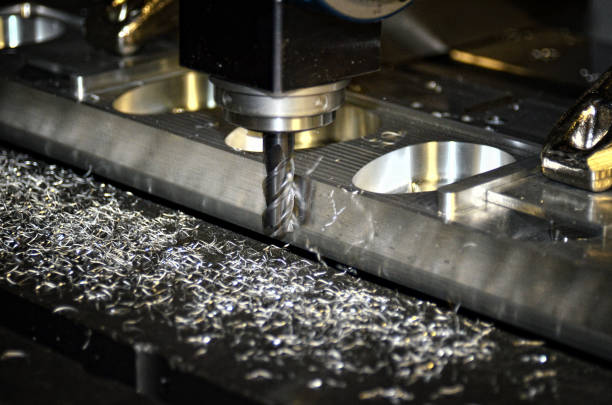CNC machining is an important process for creating precision parts in a variety of industries. Two of the most common materials used in CNC machining are brass and aluminum. While these materials may seem similar at first glance, there are actually some significant differences in their properties, machining characteristics, and best practices. In this post, we’ll explore the differences and similarities between brass and aluminum CNC machining and provide some best practices for working with each material.

Differences between Brass and Aluminum CNC Machining:
One of the biggest differences between brass and aluminum CNC machining is the properties of the materials themselves. Brass is a copper alloy that is known for its excellent machinability, corrosion resistance, and high strength. Aluminum, on the other hand, is a lightweight metal that is also known for its excellent machinability, as well as its high thermal and electrical conductivity.
Another key difference between the two materials is their cost. Brass is generally more expensive than aluminum, which can make it less cost-effective for some applications. Additionally, brass is a denser material than aluminum, which means that it can be more difficult to machine in some cases.
Similarities between Brass and Aluminum CNC Machining:
Despite their differences, there are also many similarities between brass and aluminum CNC machining. For example, both materials can be machined using similar tools and techniques, including milling, drilling, and turning. Additionally, both materials can be finished using a variety of methods, including sanding, polishing.
Best Practices for Brass and Aluminum CNC Machining:
To get the best results when CNC machining brass and aluminum, it’s important to follow some best practices. Here are a few tips to keep in mind:
- Use the right cutting tools: For both brass and aluminum, it’s important to use cutting tools that are appropriate for the material being machined. This may include carbide or diamond-coated tools, depending on the specific application.
- Pay attention to machining speed and feed rates: The speed and feed rates used for brass and aluminum can have a big impact on the quality of the finished part. In general, higher speeds and feed rates can be used for aluminum, while brass may require slower speeds and feeds.
- Use the right coolant: Coolant can help reduce heat buildup during machining, which can help prevent tool wear and damage to the material being machined. For brass, a water-soluble coolant is typically recommended, while aluminum may require a more specialized coolant.
CNC machining brass and aluminum can be a complex process, but by understanding the differences and similarities between the two materials and following some best practices, it’s possible to create high-quality precision parts. Whether you’re machining brass or aluminum, it’s important to use the right tools, pay attention to machining speed and feed rates, and use the right coolant to get the best results. By following these tips, you can improve your CNC machining skills and create better parts.
